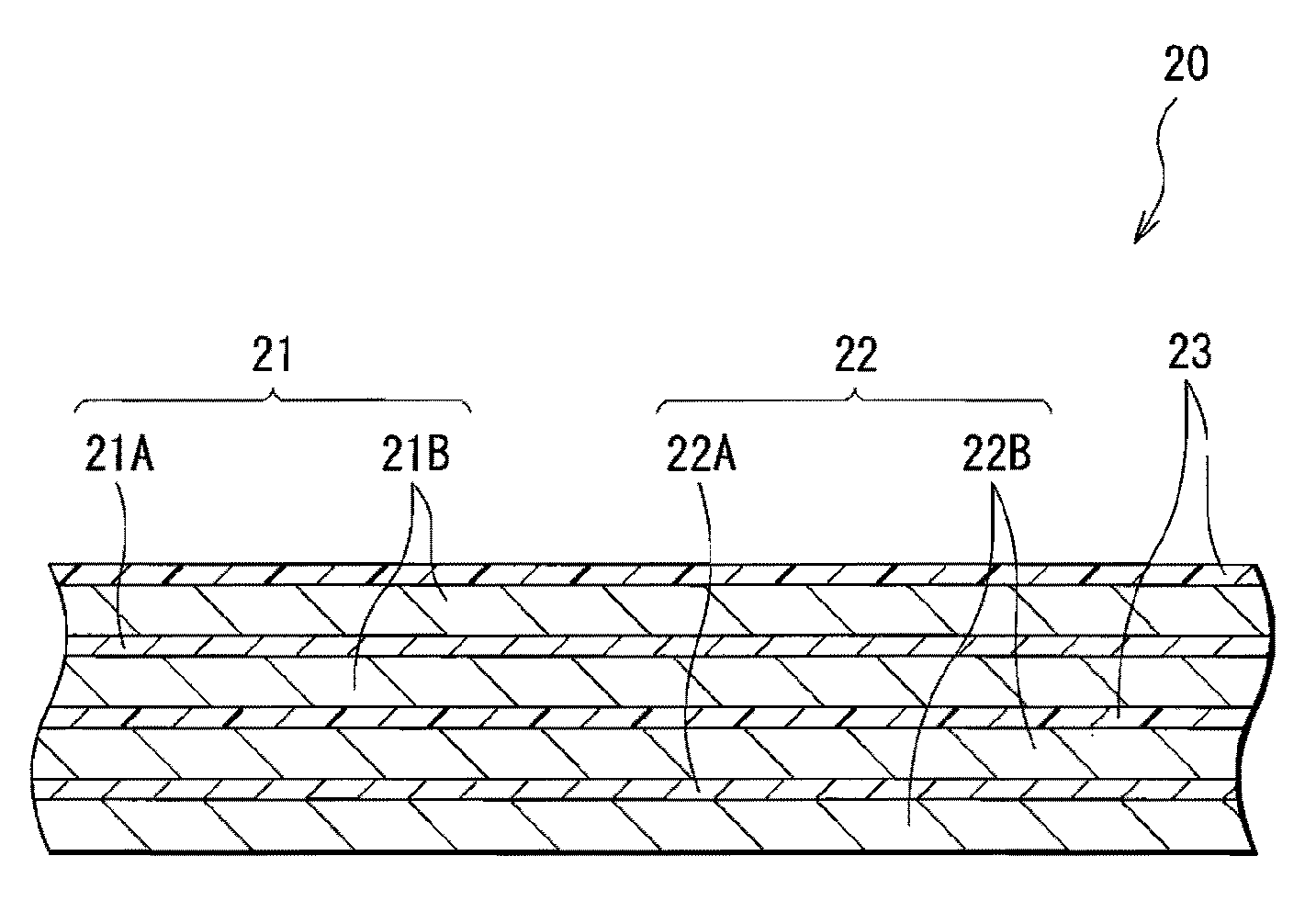Anode active material and secondary battery
- Summary
- Abstract
- Description
- Claims
- Application Information
AI Technical Summary
Benefits of technology
Problems solved by technology
Method used
Image
Examples
examples
[0088]Specific examples of the invention will be described in detail.
examples 1-1 to 1-5
[0089]First, anode active materials were formed. First, as raw materials, silicon powder, titanium powder, carbon powder, and boron powder were prepared. The silicon powder and the titanium powder were alloyed to obtain silicon-titanium alloy powder, to which the carbon powder and the boron powder were added and the resultant was dry-blended. At that time, the ratios of the raw materials (raw material ratio: mass %) were changed as shown in Table 1. Specifically, the raw material ratio of boron was set to the constant value of 10 mass %. The raw material ratio of silicon to the total of raw material ratios of silicon and titanium (hereinafter referred to as “Si / (Si+Ti)”) was set to the constant value of 85 mass %. The raw material ratio of carbon was changed in the range from 5 mass % to 20 mass % both inclusive. Subsequently, 20 g of the foregoing mixture together with about 400 g of corundum being 9 mm in diameter was set into a reaction vessel of a planetary ball mill of ITO Seis...
examples 2-1 to 2-4
[0103]Anode active materials and secondary batteries were formed in the same manner as that in Examples 1-1 to 1-5, except that the raw material ratios of silicon, titanium, carbon, and boron were changed as shown in Table 2. Specifically, the raw material ratio of carbon was set to the constant value of 10 mass %, Si / (Si+Ti) was set to the constant value of 85 mass %, and the raw material ratio of boron was changed in the range from 5 mass % to 20 mass % both inclusive.
TABLE 2Si / (Si + Ti) = 85 mass %Initial2 Cy.300 Cy.CapacityRaw material ratioAnalytical valuechargedischargedischargeretention(mass %)(mass %)Half-widthcapacitycapacitycapacityratioSiTiCBSiTiCBC + B(deg)(mAh / g)(mAh / cm3)(%)Example 2-172.2512.7510571.512.69.94.914.82.621201458659Example 2-271.412.610670.712.59.95.915.82.721331488759Example 1-36812101067.311.99.99.919.83.2214315211475Example 2-363.7511.25101563.111.19.914.924.83.5200214610572Example 2-459.510.5102058.910.49.919.829.73.918821418560Comparative76.513.510—75...
PUM
 Login to View More
Login to View More Abstract
Description
Claims
Application Information
 Login to View More
Login to View More - R&D
- Intellectual Property
- Life Sciences
- Materials
- Tech Scout
- Unparalleled Data Quality
- Higher Quality Content
- 60% Fewer Hallucinations
Browse by: Latest US Patents, China's latest patents, Technical Efficacy Thesaurus, Application Domain, Technology Topic, Popular Technical Reports.
© 2025 PatSnap. All rights reserved.Legal|Privacy policy|Modern Slavery Act Transparency Statement|Sitemap|About US| Contact US: help@patsnap.com



